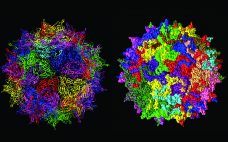Due to the complexity of biologic development and manufacturing and the business pressures of the biopharmaceutical industry’s landscape, the margin for error in today’s industry is small. That is why minimizing the threat of contamination is critical when using a closed system for drug development and manufacturing. Yet the traditional method of connecting each step in a closed process can present other risks to the integrity of your product. Therefore, it is important for you to be confident in selecting…
Sponsored Content
Is the AAV payload impacting the stability of your gene therapy?
The ability to use adeno-associated viruses (AAVs) for targeted therapeutic payload delivery has dramatically accelerated the development of life-saving gene therapies. Development can further be accelerated by monitoring critical quality attribute parameters like subvisible particles (SVP) concentration early in the development process. Capsid degradation and nucleic acid leakage can both occur under different formulation and storage conditions and contribute to the accumulation of aggregates. Characterizing candidates earlier in the development process is best as it identifies and eliminates inherently unstable…
Ask the Expert: A Scalable Platform for Production of High-Quality and GMP-Grade Plasmid DNA
Demand continues to grow for clinical- and good manufacturing practice (GMP)-grade plasmid DNA (pDNA) amid the proliferation of therapies based on mRNA and viral vectors. At a newly acquired manufacturing facility in San Diego, CA, Wacker Chemie is expanding its capabilities with a scalable platform for pDNA production. In October 2021, Mack Kuo (associate director of bioprocess development at Wacker Biotech US) showcased the site’s capabilities and described how it can provide comprehensive, customizable services for plasmid production. Kuo’s Presentation…
Ask the Expert: Bolstering Manufacturing Capacity and Achieving Supply-Chain Resilience
The novel coronavirus pandemic has exposed vulnerabilities in biopharmaceutical industry approaches to supply-chain management. Drug developers and manufacturers have tended to presume suppliers’ access to raw materials for bioprocess components. However, global crises disrupt reliable access. Ari Ojinaka (production manager at Astrea Bioseparations) joined BPI in October 2021 to explore strategies for navigating supply-chain uncertainty. He described how his company seeks to optimize manufacturing capacity, enhance communication with its suppliers and customers, and support a quality-driven company culture. Ojinaka’s Presentation…
Ask the Expert: Scale-Up Success for Cell Cultures in Single-Use Benchtop Bioreactors
During process development (PD), single-use (SU) bioreactors can streamline cell-culture workflows and reduce risks for contamination and operator errors. But transferring cultures from laboratory- to benchtop- and pilot-scale vessels requires consideration of fundamental bioreactor principles. In October 2021, Ann D’Ambruoso (manager of product applications and marketing) and Cristina Bernal Martinez (applications support engineer, both at Getinge) reviewed factors for scale-up success and presented a case study involving transfer of cell cultures to Applikon AppliFlex SU stirred-tank (ST) reactors. The Presentations…
Ask the Expert: Optimized Cell Line Development for CHO DG44 Expression Systems
In November 2021, Rathangadhara Nammalwar (manager of protein-based therapeutics at Sartorius) delivered a presentation describing the hallmarks of a robust cell line development (CLD) platform. Focusing on the importance of expression constructs, he then explained how collaboration with external partners has enabled Sartorius to optimize its Cellca CLD platform for mammalian-cell production of therapeutic proteins. Nammalwar’s Presentation Nammalwar identified key criteria for selecting a CLD platform, noting first that it should leverage a highly productive cell line that yields high-quality…
Ask the Expert: A Platform for Purification and In-Process Analysis of Adenovirus Vectors
Despite safety-related setbacks in the early 2000s, adenovirus (Ad) again is gaining traction as a vector for advanced therapies and vaccines. Thus, Ad production is accelerating. In November 2021, Hana Jug (project manager in process development for viral vectors and vaccines at BIA Separations, a Sartorius company) described how her company’s updated platform process for Ad vectors could enhance their purification, maximizing recovery of critical vaccine components. Jug also highlighted BIA’s abilities to supply chromatographic columns consistently and to support…
Ask the Expert: Rapid Determination of AAV Capsid Titers at Early Manufacturing Stages
During a December 2021 presentation, Matthew Lotti (senior research associate in analytical development at Ultragenyx) highlighted difficulties with determining adenoassociated virus (AAV) capsid titers during gene therapy production. With support from Gyros Protein Technologies, Lotti spoke about his team’s development of a method for measuring AAV titers using a Gyrolab xPand immunoassay system. Lotti’s Presentation Simple analytical methods such as UV spectrophotometry measure capsid titers most effectively after virions have undergone purification. To test samples from earlier process stages, Ultragenyx…
Validated Quantitation and Activity Assay of Antibody Fragment Molecule (Fab) for Process Development and Quality Control
The analytical group at Boehringer Ingelheim, Fremont, USA needed a robust assay to measure the biological activity of an antibody fragment (Fab) molecule for in-process testing as well as stability and lot release testing in their Quality Control (QC) department. The developed Fab activity assay is accurate and robust, with intermediate and intramediate precision less than 10%. Drug activity measurement using the Octet® system has become a critical parameter for their product evaluation and has resulted in increased Fab drug…
Improving Plasmid Design, Process and Manufacturing to Improve Viral Vector Yield
This webcast features: Richard Parker-Manuel, Group Leader for Plasmid Engineering and Production at OXGENE, WuXi Advanced Therapies. Successful development of cell and gene therapies requires robust, scalable manufacturing processes which generate high-quality material. There are substantial challenges associated with producing high viral yields and with navigating the regulatory environment to bring a therapeutic to market, a process which is often expensive and inefficient. Many challenges are attributable to the plasmid design and manufacturing step, where plasmids are the building blocks…



